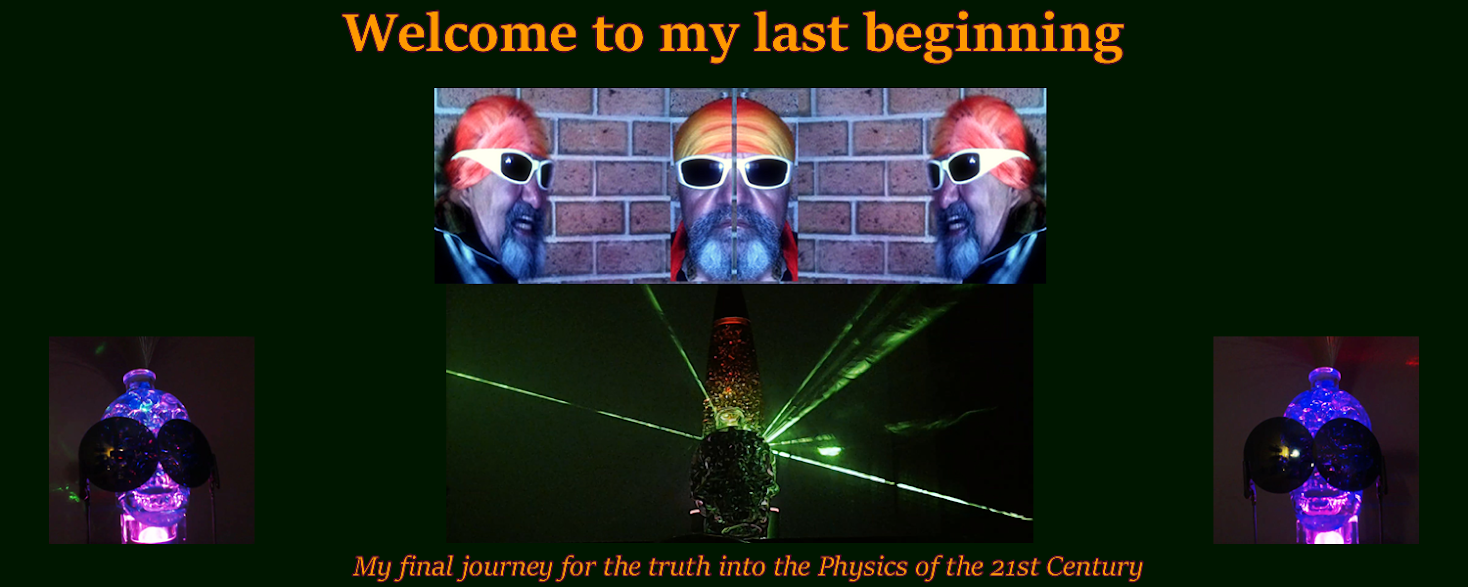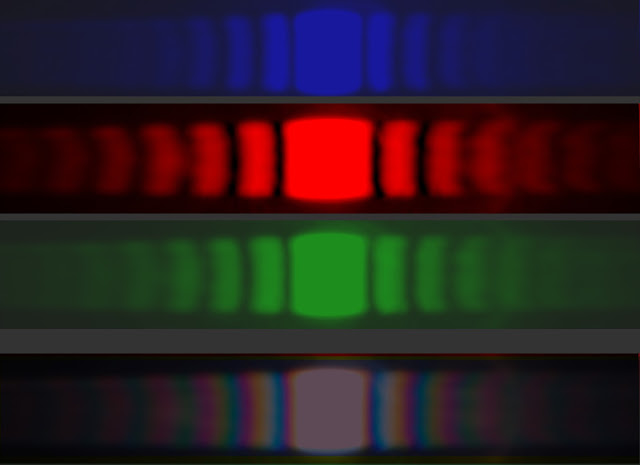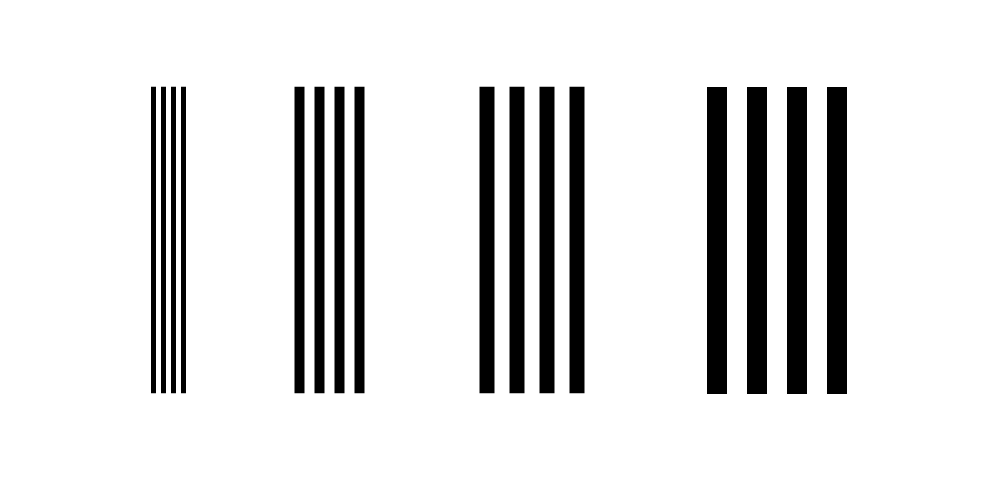Believe it or not, that was a typo. Nonetheless, on second thoughts I decided to leave it--to let them strut their stuff, or whatever.
It angers me to see a mouthful of hot air passing on as validated understanding. Read Cheesykid296's beautiful question 2, read then the answers on offer, make your own judgment if Cheesykid296 should buy whatever's on offer, and then come back and I'll show you something.
I took Pieter's image, cut into three separate strips the three RGB channels, changed the opacity of the B and G channels (to about 42%) and finally I did the next natural move and superimposed the three channels with R at the bottom, for obvious reasons. Next... presto, I predicted all the colours in an instant. Thanks.
Let us compare my rendition of Pieter's one slit diffracted image with the original one. And now is time for you to think.
Look, I'll now tell you what to do next, if you truly want physics to evolve as it should.
Observe the RGB channels and notice the variations that exist between the three. I'm talking about variations in wavelengths, which--btw--can be quite easily seen by the naked eye. This fact is readily demonstrable by a quick look at the picture below.
Now, do you believe me if I tell you that the three little RGB squares are perfectly equal in size? You do? Good, because I assure you that they most certainly are. (After all you can easily verify that for yourself, as you know😎.)
Think a little and ponder a minute, and then you'll see that the wavelengths of light appear to be extending true to number equally in space both transversally and longitudinally. Measure with the great care that you have invariably shown over the centuries of history, the relationships that exist between the three primary colours, for you'll need those later in order to quantize the white light spectroscopically.


Observe the RGB channels and notice the variations that exist between the three. I'm talking about variations in wavelengths, which--btw--can be quite easily seen by the naked eye. This fact is readily demonstrable by a quick look at the picture below.
Now, do you believe me if I tell you that the three little RGB squares are perfectly equal in size? You do? Good, because I assure you that they most certainly are. (After all you can easily verify that for yourself, as you know😎.)
Think a little and ponder a minute, and then you'll see that the wavelengths of light appear to be extending true to number equally in space both transversally and longitudinally. Measure with the great care that you have invariably shown over the centuries of history, the relationships that exist between the three primary colours, for you'll need those later in order to quantize the white light spectroscopically.

One of the things that I find quite incomprehensible is the fact that for more than three centuries now our conventional physicists have failed time and again to put two and two together in the matter of diffraction and interference, even though they have been sitting on tons of data screaming at them all sorts of abuse, in all conceivable languages and accompanied by a healthy array of complementary signs.
Let me give you just one example that should have resulted in a serious consideration of a longitudinal distribution of the primary colours in a beam of white light. As far as I'm concerned I believe that Edwin Land, or someone familiar with Land's work, should have seen that the great amount of his data was pointing emphatically toward just that. Now, I don't want to spend time discussing the issue in detail, but I will show you what I mean. Please have a look at the diagram below.
If you are familiar with Land's work you should instantly get the idea of why I said what I said. That's all I'll say about that (even though I have a whole folder bulging at the seams with my account of Land's work, which I wrote in full a few months ago).
And then there's the issue of the diffracting spectra, which is a matter I always found close to my eye and soul. The colours seen in most known spectra of diffraction have long been known to me, and they are regularly observed. In fact I know by heart how to generate all of those colours by using nothing but a prism.
Have a good look at the colours displayed and in the meantime you can fetch your favourite prism and I will show you next how to generate exactly the same colours, and more, by using a simple triangular prism.
First sit yourself comfortably in front of your monitor with your eyes at a distance of about 80 cm from the screen. Holding your prism in the right hand (with the apex pointing to your left)place the prism right next
Let me give you just one example that should have resulted in a serious consideration of a longitudinal distribution of the primary colours in a beam of white light. As far as I'm concerned I believe that Edwin Land, or someone familiar with Land's work, should have seen that the great amount of his data was pointing emphatically toward just that. Now, I don't want to spend time discussing the issue in detail, but I will show you what I mean. Please have a look at the diagram below.
If you are familiar with Land's work you should instantly get the idea of why I said what I said. That's all I'll say about that (even though I have a whole folder bulging at the seams with my account of Land's work, which I wrote in full a few months ago).
And then there's the issue of the diffracting spectra, which is a matter I always found close to my eye and soul. The colours seen in most known spectra of diffraction have long been known to me, and they are regularly observed. In fact I know by heart how to generate all of those colours by using nothing but a prism.
Have a good look at the colours displayed and in the meantime you can fetch your favourite prism and I will show you next how to generate exactly the same colours, and more, by using a simple triangular prism.
First sit yourself comfortably in front of your monitor with your eyes at a distance of about 80 cm from the screen. Holding your prism in the right hand (with the apex pointing to your left)place the prism right next















